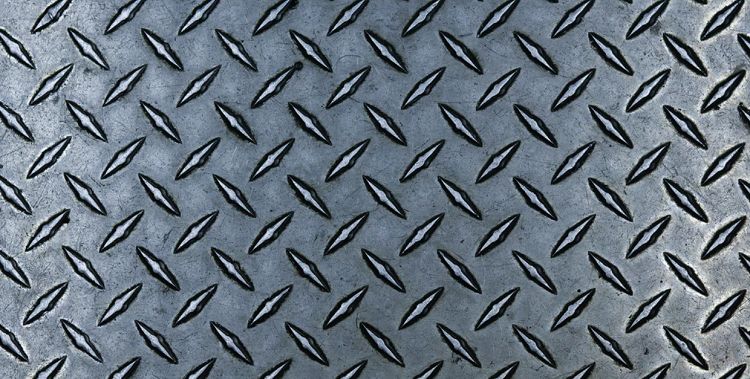
If you are tired of seeing dirty fingerprints on metal appliances, forget about spending a small fortune on commercial cleaning. They are expensive, corrosive and bring a lot of chemicals into your home. Household cleaners can tackle the dirtiest metals at a fraction of the cost of commercial products. The best part? They are all-natural, which means you can keep your appliances shiny and new without coating them with toxins. Before we start looking at some of the best natural cleaners you can make from the ingredients in your pantry, a little warning. Metals seem as hard as old fingernails, but some can be incredibly fragile. If you are unsure about using a new product (homemade or not) on your precious metals, always test it on a small, inconspicuous area first. If it’s a valuable item, don’t try to do it yourself and leave it to the professionals. Tips, here’s everything you need to know about how to clean metal, of course.
How to clean silverware
Over time, silver can oxidize, becoming as dull as the water in the dinnerware. Put the glitters back into the silverware as follows.
- Step 1 – Wash the items thoroughly in hot soapy water.
- Step 2 – Put a tablespoon of salt and a tablespoon of baking soda in a pan lined with aluminum foil. Add the water, put the pan on the heat and bring to a boil.
- Step 3 – Remove the pan from the heat, add the silverware and let stand for five minutes. Stir gently with a spatula while they soak.
- Step 4 – Once the silverware looks clean, remove it from the water and polish it with a soft cloth to bring it back to its shine.
How to clean stainless steel
Stainless steel appliances can be beautiful when they are new and shiny, but over time they can lose their luster. To restore shine, try the following method.
- Step 1 – Fill a spray bottle with undiluted white vinegar. As The Spruce points out, vinegar is a mild acid that penetrates oil and dirt from fingerprints, making it easy to pick up with a cloth and not smear on the surface like some other cleaners do. In addition to its lubricating and refreshing properties, vinegar is a non-abrasive and effective disinfectant, making it a very useful product in your cleaning arsenal.
- Step 2 – Spray stainless steel surfaces with vinegar and gently wipe with a soft cloth or paper towel. Rub in the direction of the grain for best results.
- Step 3 – Once the dirt and fingerprints are removed, wipe the surface again with a damp cloth. This removes the last traces of vinegar, which can start reacting with the metal in an undesirable way if stored for a long time.
How to turn off the gold
Although there are special cleaning products for gold, you will be surprised how many ordinary home remedies you can use to make gold shine again. While you may want to leave precious gold items with gemstones (engagement rings, etc.) to the professionals, you can successfully restore ordinary gold items using the following method.
- Step 1 – Apply a small amount of toothpaste to the surface of the gold item to be cleaned. If desired, you can replace the toothpaste with a paste made from a combination of flour, vinegar and fine salt.
- Step 2 – Gently scrub the toothpaste with a toothbrush.
- Step 3 – Rinse the product and gently wipe the surface with a soft cloth.
How to clean aluminium
As WikiHow points out, one of the most effective ways to clean aluminum is to use common household acids, such as lemon or vinegar. When cleaning aluminum cookware, remove burned-on food first by adding a little water to the pan and letting it simmer. After 5 minutes, remove from heat: Burnt food should come off easily with a rubber spatula. Do not attempt to remove food crusts with steel wool or other materials: The flow material can cause irreparable damage.
- Step 1 – Clean the inside of the pan by washing it with hot soapy water. Once clean, rinse and fill with clean water and 2 tablespoons of lemon juice or white vinegar. Place the pan on the stove and simmer for 15 minutes. When the pan is clean, rinse it and dry it well.
- Step 2 – Now that the inside of the pan is shiny, it’s time to tackle the outside. Cut the lemon in half and dip the cut side into the salt. Rub the lemon over the surface of the pan. Finally, wipe the surface with a damp cloth before drying.
How to clean copper, brass and tin
As Clenipedia writes, copper has made a comeback in recent years, and that’s no surprise. But while it looks great when it’s shiny and new, it can become dull and discolored over time. If your copper products are in need of a refresh, try this simple cleaning method. It also works well with brass and tin.
- Step 1 – Cut the lemon in half and sprinkle the free side with coarse salt. Gently rub the lemon over the surface of the machine.
- Step 2 – Rinse the instrument with a soft cloth before polishing to restore the shine.
Tip: You can also try mixing lemon juice and baking soda into a paste. The goal is the consistency of the toothpaste. Stir the mixture through the surface and let it stand for five minutes. Rinse and then wipe with a soft cloth.
How to remove chrome
Hunker has a few tips for cleaning metal, including this easy way to work with chrome.
- Step 1 – Put a small amount of baby oil on a soft cloth.
- Step 2 – Thoroughly clean the chrome fixtures and trim with a cloth to make them shine.
How to clean cast iron
Cast iron cookware is fun to use, but easily loses its shine over time. Give them a refresh with this simple method.
- Step 1 – Hold the cast iron under hot water. Use a plastic brush to remove burned-on food.
- Step 2 – Dry the pan. Spread a small amount of olive oil on a dry cloth and lightly brush the inside of the pan with it.
frequently asked questions
What should I use to clean the metal?
Use rubbing alcohol with a soft, dry cloth and wipe away oil stains until they disappear. Always dry the metal after cleaning to restore its natural shine. For stubborn stains, you can use baking soda and boiling water.
How do you clean dirty metal?
Mix baking soda and salt with hot water and cover everything with it. The proportions are not critical, but about 1 tablespoon of salt and 1 tablespoon of baking soda to 3 dl of water should be sufficient. Slightly affected items can be cleaned in a matter of minutes. Just rinse and dry.
Can sodium carbonate cook a pure metal?
While you can scrub many metal surfaces with baking soda, be careful with aluminum cookware. If you use it quickly and rinse it off, it’s probably fine, but if you leave the soda mixture on the surface too long, it can oxidize, meaning the surface changes color.
Related Tags:
how to clean metal with vinegar,how to clean metal rust,how to clean oxidized metal,how to clean metal with baking soda,how to clean metal surfaces,how to clean tarnished metal objects,Feedback,Privacy settings,How Search works,how to clean tarnished metal with baking soda,how to clean metal before painting












